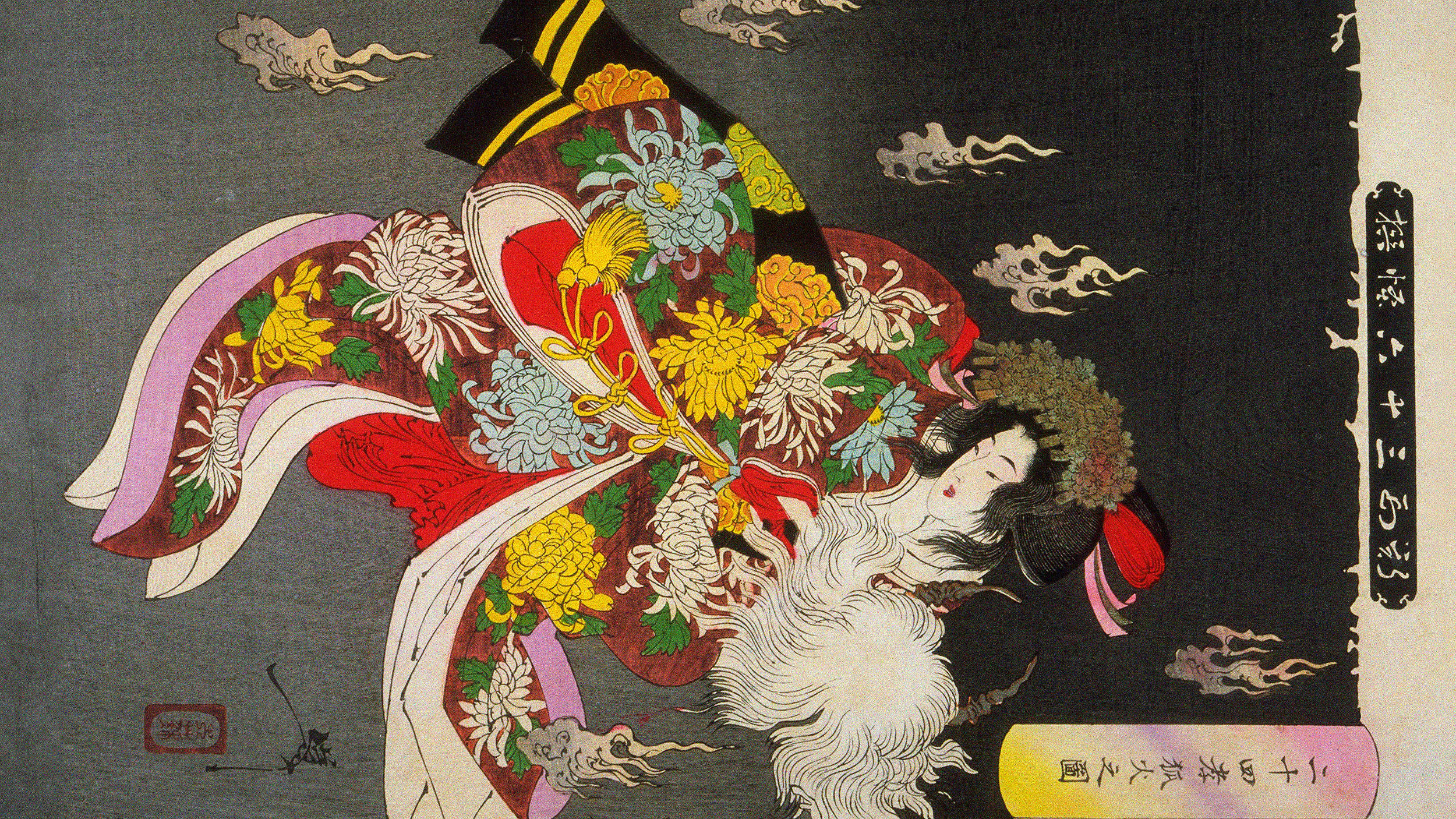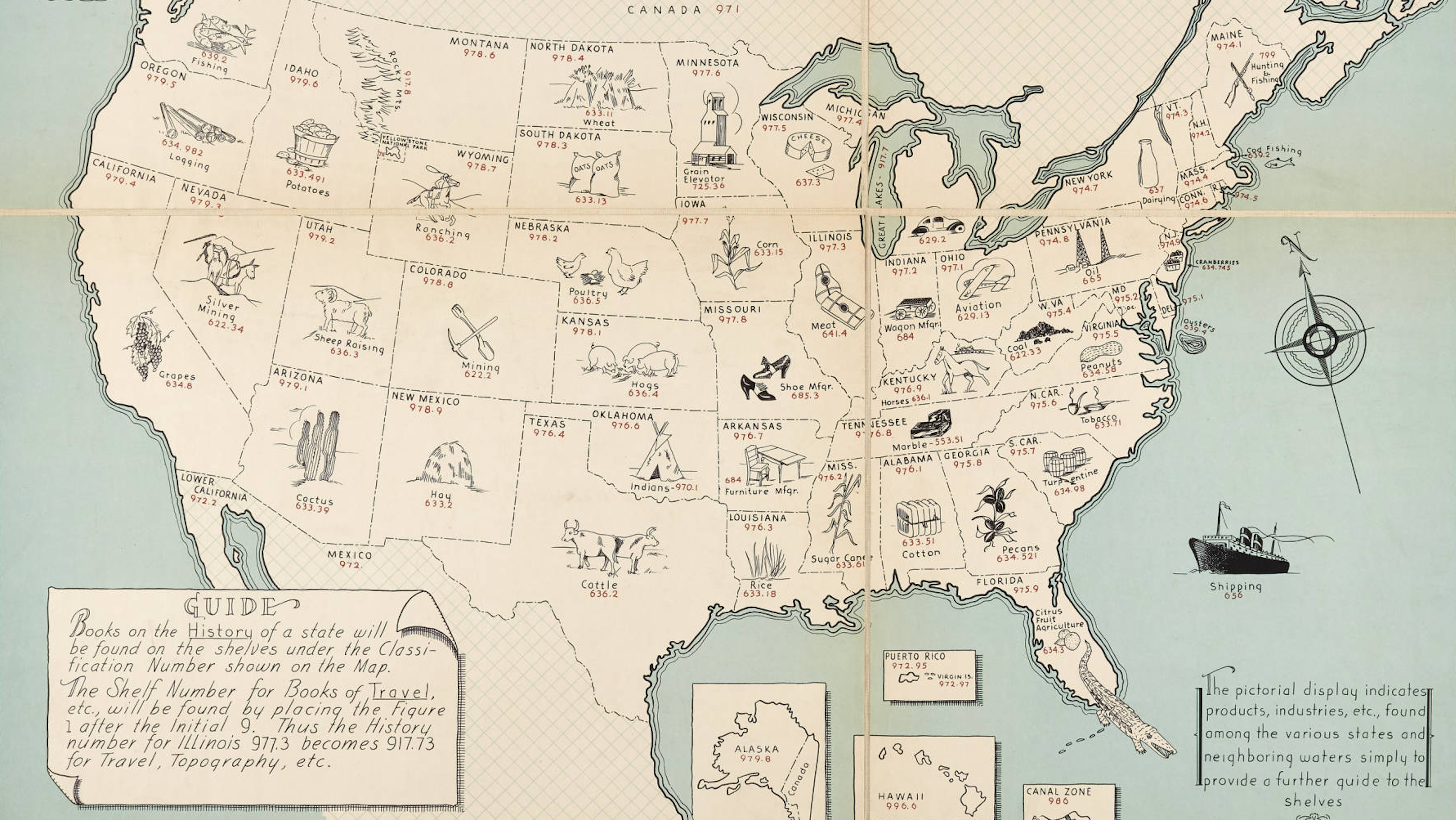7 prophetic writings by American presidents

- Presidential candidates run on platforms of change and are elected by those who desire their vision of the future.
- We look at seven times presidents' writings that have been oddly, if accidentally, prophetic.
- Of course, there may be some hindsight bias in our selections.
U.S. Presidents aren’t just chosen to lead us through current events, but because they have a vision of the future their constituents want to be led toward. President Trump’s campaign message in 2016 was to regain America’s economic and political strength, while President Obama’s campaign message in 2008 was racial reconciliation and renegotiation of cultural equity.
Given our desire for forward-thinking leaders, we wanted to look back to see which presidents played the role of an elected Nostradamus and seemed to accurately augur the future. Here are seven prophetic writings penned by seven American presidents.

The George Washington Sculpture at the National Museum of American History, looking super prophetic.
(Photo from Wikimedia)
George Washington
George Washington’s vision for his country was on point, and he laid the foundations for that change throughout his presidency and beyond. In June 1783, Washington wrote his Letter of Farewell to the Army, which contained this prophetic phrase:
For, according to the system of Policy the States shall adopt at this moment, they will stand or fall, and by their confirmation or lapse, it is yet to be decided, whether the Revolution must ultimately be considered as a blessing or a curse: a blessing or a curse, not to the present age alone, for with our fate will the destiny of unborn Millions be involved.
Washington couldn’t have known how right he was. The American Armed Forces were instrumental in defeating the Axis powers in World War II (blessing). Yet it was also an instrument of the violence and territorial seizure that characterized the American Indian Wars (curse). All told, Washington, perhaps more than his contemporaries, believed the impact America would have on the world stage and worked diligently toward fulfilling that prophecy.

Thomas Jefferson
In 1776, the first Virginia General Assembly appointed a committee to revise Virginia law. In total, the committee presented 126 bills, among them the now famous Bill No. 82 “A Bill For establishing religious freedom.”
It’s fellow Bill No. 79, “A Bill for the More General Diffusion of Knowledge,” proved less successful but no less prescient. Through it, Thomas Jefferson argued that a liberal education was a public good, and Virginia citizens had a right to it regardless of status.
[…] yet experience hath shewn, that even under the best forms, those entrusted with power have, in time, and by slow operations, perverted it into tyranny; and it is believed that the most effectual means of preventing this would be, to illuminate, as far as practicable, the minds of the people at large, and more especially to give them knowledge of those facts, which history exhibiteth, that possessed thereby of the experience of other ages and countries, they may be enabled to know ambition under all its shapes, and prompt to exert their natural powers to defeat its purposes; […].
Jefferson had his finger a pulse that began pounding in later decades. The U.S.’s first public high school, Boston English, opened in 1820. By 1827, Massachusetts made all grades of public school free of charge, though the state’s first compulsory education law wouldn’t come until 1851.
Historic institutions such as segregation and Indian boarding schools show that America’s rhetoric far outpaces its progress, but as far back as Jefferson, that rhetoric has at least given us a goal to strive for — one our educational system is much closer to today.

The Abraham Lincoln Memorial in Washington, D.C. also had Lincoln looking super prophetic. Must be a sculptor thing.
(Photo from Flickr)
Abraham Lincoln
Thanks to his popularity, many people have spread baseless rumors that Abraham Lincoln had visions of the future. Rumor has it he predicted his own death (he didn’t) and that he received a vision foretelling America’s destruction at the hands of capitalism (also not true).
Like any good rumor, both tales exhibit kernels of truth. Lincoln was interested in dream interpretation, and he did have some not-so-kind words for the brand of capitalism developing in his time.
It is the effect to place capital on an equal footing with, if not above, labor, in the structure of government. […] Labor is prior to, and independent of, capital. Capital is only the fruit of labor, and could never have existed if labor had not first existed. Labor is the superior of capital, and deserves much the higher consideration. Capital has its rights, which are as worthy of protection as any other rights.
Many contemporary political grievances today stem from our economy’s undervaluation of labor. Trump’s political base sought redress after their jobs were shipped overseas in the name of capital gains, and Occupy Wall Street protested the extravagances of the financial sector in the wake of the Great Recession.
As Paul Krugman noted in a New York Times op-ed: “The American economy is still, by most measures, deeply depressed. But corporate profits are at a record high. How is that possible? It’s simple: profits have surged as a share of national income, while wages and other labor compensation are down. The pie isn’t growing the way it should — but capital is doing fine by grabbing an ever-larger slice, at labor’s expense.”
Lincoln couldn’t have said it better himself.
(And, yes, we cheated here. As any Lincoln fan will tell you, this quote comes from Lincoln addressing Congress, not a writing.)

A statue of Theodore Roosevelt’s depicting his time leading the Rough Riders.
(Photo from Wikimedia)
Theodore Roosevelt
In February 1915, Theodore Roosevelt wrote a letter to his friend Cecil Spring Rice, the British ambassador responsible for convincing America to enter World War I. Never one to pass up a good row, Roosevelt’s letter laments the Wilson administration’s decision to remain neutral.
We are not an alert people. We do not understand foreign affairs and, when a President misleads us, as Wilson has done, some very good people tend to follow him[…]. But you are quite right in saying that each nation must trust only to itself. In your letter you say that your people must trust only to yourselves and also to your present allies. I believe that they will stand by you through this war; but twenty-five years hence you may be aiding with Germany against Russia for anything you can tell.
Roosevelt’s sentiment that today’s convenient allies may be tomorrow’s enemies is the oracular equivalent of a Pass Line bet, but his choice of countries to illustrate the point is darn near divinatory, seeing as German’s penchant for picking a fight in the first half of the 20th century would have given such an alliance long odds.
But align they did. As member countries in NATO and the EU, for now at least, today Britain and Germany are allies against Vladimir Putin’s attempts to upset the European balance of power. Through NATO, both countries supported sanctions against Russia for its annexation of Crimea, and Russia has countered by meddling in their elections, not to mention the elections of the United States and France.
Granted, it’s not the glorious cavalry charge the bellicose Roosevelt had in mind, but it’s disruptive conflict nonetheless.

President John F. Kennedy visits Sandia Laboratory.
(Photo from Flickr)
John F. Kennedy
In 1960, then President-Elect John F. Kennedy wrote an article for Sports Illustrated titled “The Soft American.” In it, he lamented that a large number of American youths were neglecting their bodies. This, he argued, was a detriment to the nation as the physical excellence of citizens was “an important foundation for the vigor and vitality of all the activities of the nation.”
In this sense, physical fitness is the basis of all the activities of our society. And if our bodies grow soft and inactive, if we fail to encourage physical development and prowess, we will undermine our capacity for thought, for work and for the use of those skills vital to an expanding and complex America.
Thus, the physical of our citizens is a vital prerequisite to America’s realization of its full potential as a nation, and to the opportunity of each individual citizen to make full and fruitful use of his capacities.
One reading of Kennedy’s article is that he foresaw America’s increasing struggle with food, health, and exercise. The U.S. prevalence of obesity in adults is roughly 40 percent, and obesity-related diseases like heart disease and type 2 diabetes are some of the leading causes of preventable, premature death.
A less charitable reading of Kennedy’s article is that he essentially fat-shamed America for producing doughy boys. “He inadvertently and completely unscientifically predicts a public health crisis, and unwittingly encapsulates the ongoing problem of privilege masquerading as meritocracy,” writes Aaron Gordon.
Either way, Kennedy was ahead of the curve with this one.

Richard Nixon
If one president on this list wished he truly had prophetic visions, it would be Richard Nixon. His presidency came crashing down over Watergate, a break-in that provided ample risks but few clear benefits for the Committee for the Re-election of the President.
Even so, Nixon had his moments of near-clairvoyance. In 1967, he wrote an article for Foreign Affairs on the subject of Asia after Vietnam. Visiting Asia twice as the Vice President, Nixon was convinced that Asia’s transformation after Vietnam would be toward capitalism and non-communist governments.
Sometimes dramatically, but more often quietly, the rest of Asia has been undergoing a profound, an exiting and on balance an extraordinarily promising transformation. One key to this transformation is the emergence of Asian regionalism; another is the development of a number of the Asian economies; another is gathering disaffection with all the old isms that have so long imprisoned so many minds and so many governments. By and large the non-communist Asian governments are looking for solutions that work, rather than solutions that fit a preconceived set of doctrines and dogmas.
At first glance, Nixon’s foretelling appears off-base. Of the five remaining communist governments, four are in Asia (China, Laos, Vietnam, and North Korea). However, democracy maintains in the region with countries like India, Mongolia, Japan, Pakistan and Indonesia, all scoring at least a 7 on the Polity scale. The region also houses some of the fastest growing economies.
And while still communist, China has adopted Nixon’s benchmark of “looking for solutions that work, rather than solutions that fit a preconceived set of doctrines and dogmas.” The New York Times continues to chronicle China’s meteoric rise to world superpower, and the country is looking to step up as a leader in battle against global climate change.
Nixon’s crystal ball was working, if a bit cloudy.

Former U.S. President Barack Obama addresses the crowd in support of Georgia Democratic Gubernatorial candidate Stacey Abrams during a campaign rally at Morehouse College on November 2, 2018 in Atlanta, Georgia.
(Photo by Jessica McGowan/Getty Images)
Barack Obama
Barak Obama published Dreams from My Father in 1995, long before his historic 2008 campaign, but several of its passages contain a prescience for his presidency and beyond. Consider this passage from when Obama worked as a community organizer in Chicago in 1987.
There was nothing definite I could point to, no hard statistics. The drive-by shootings, the ambulance sirens, the night sounds of neighborhoods abandoned to drugs and gang war and phantom automobiles, where police or press rarely ventured until after the body was found on the pavement, blood spreading in a glistening, uneven pool—none of this was new. In places like Altgeld, prison records had been passed down from father to son for more than a generation.
While it’s been slow moving, today the adverse effects of our criminal justice system are becoming more widely recognized. Recent studies have shown that incarceration of parents and the subsequent maltreatment of the child leads to a greater chance of intergenerational run-ins with law enforcement. President Trump has called for a criminal justice reform bill from Congress, and the Criminal Justice Reform Initiative appears to have bipartisan support.
An exercise in hindsight bias
Like any Nostradamus, elected or otherwise, these presidents didn’t really have any special futuristic insights, and this article is designed to be a fun exercise in hindsight bias. Still, it’s interesting to look back to see that many contemporary concerns have roots reaching back decades or centuries, and in that time, some of our country’s most powerful men have been struggling to divine answers to them.
Our progress has been spotty at best, but as Abraham Lincoln said, “The struggle of today, is not altogether for today — it is for a vast future also. With a reliance on Providence, all the more firm and earnest, let us proceed in the great task which events have devolved upon us.”




